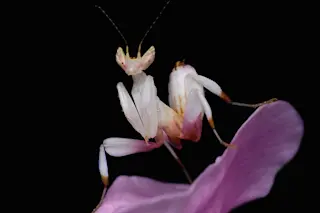In his 1879 account of wanderings in the Orient, the travel writer James Hingston describes how, in West Java, he was treated to a bizarre experience:
I am taken by my kind host around his garden, and shown, among other things, a flower, a red orchid, that catches and feeds upon live flies. It seized upon a butterfly while I was present, and enclosed it in its pretty but deadly leaves, as a spider would have enveloped it in network.
What Hingston had seen was not a carnivorous orchid, as he thought. But the reality is no less weird or fascinating. He had seen — and been fooled by — an orchid mantis, Hymenopus coronatus, not a plant but an insect.
We have known about orchid mantises for more than 100 years. Famous naturalists such as Alfred Russell Wallace have speculated about their extraordinary appearance. Eschewing the drab green or ...














